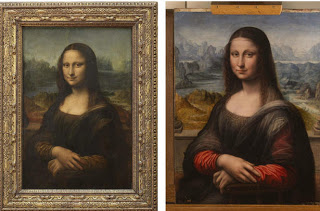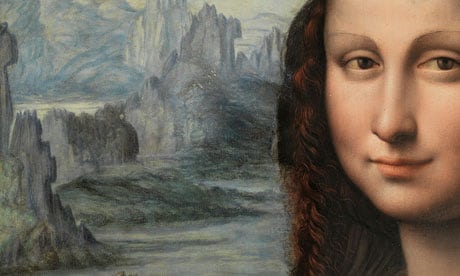Leading the news on this morning's Radio Nacional de España bulletin was an item much more uplifting than the usual recitals of violence, disaster and unemployment. Madrid's Prado Museum has announced that it has on its walls a Mona Lisa - La Gioconda in Spanish - painted at the same time, between 1503-06, as Leonardo da Vinci was painting the original Mona Lisa, the iconic portrait of Lisa Gherardini, wife of a Florentine cloth merchant.
This announcement is, understandably, of huge interest to the Spanish, at a time when everything seems to be going wrong for them. The story has fascination for everyone who has fallen under the spell of Mona Lisa's enigmatic smile as she gazes from the walls of the Louvre, now sadly rather hidden behind layers of bullet-proof protection. There have been a number of copies of this famous painting which are distributed around the world. However, the discovery of the Prado "twin" is full of interesting insights, although the experts are trying to play down the public excitement.
La Gioconda at the Prado, (courtesy of the Prado Museum)
This twin portrait, of very similar dimensions to the Louvre version, has actually belonged to the Prado Museum for a long time; it was first recorded in 1666 as part of the Royal Collection. However, as has now been discovered, it was then considered an interesting but unexciting portrait, mainly because the figure was set in a black background as can be seen in the image above prior to restoration.. It was also thought to have been painted on an oak panel, which implied that an artist working in the Low Country (today's Holland and Belgium) painted it. Florentine artists used poplar or walnut panels for their paintings.
However, the spur for further investigation was an upcoming exhibition about Sainte Anne, Leonardo's last great painting,opening in March at the Louvre. The Prado experts first found that the wooden panel was indeed walnut, which meant that it was painted in Florence. Then infrared reflectography revealed that there was a landscape painted behind the lady, which echoed the landscape behind the Louvre's Mona Lisa. The removal of the black background confirmed a luminous Tuscan landscape, with the river Adda, a favourite of Leonardo. Crisper and with no sfumato, the scene helps confirm details on Leonardo's version. Apparently, the black ground was added about two centuries after the painting was executed, probably following current fashion.
A detail of the nearly conserved Leonardo da Vinci pupil's take of the Mona Lisa. The Prado has yet to finish conservation work on the whole painting. Photograph: Museo Nacional del Pradio
Not only is the background a luminous echo of the original, but the lady herself has a few interesting details which supplement those of the Louvre's Mona Lisa. Eyebrows, a frilly dress neckline, a sheer veil draped across her left shoulder and elbow, and even clearer details of the spindles of the chair in which the lady is seated - these are seen as clarifying details. All this information has led to the conclusion that this version of the Mona Lisa was painted at the same time that Leonardo da Vinci was working on his portrait of Lisa Gherardini, but that he himself did not work on this copy. Possibly the two paintings were done side by side, using the same model, maybe as a teaching exercise or maybe to duplicate a good painting for money. Indeed, Leonardo still possessed his portrait of Lisa Gherardini at his death, so he did not give the work to her husband, despite it being commissioned to celebrate the birth of her second child.
There are three names being mentioned in the press - the Spanish are talking of Francesco Melzi, a star apprentice from 1506 in Leonardo's studio, or else Andrea Salai, who joined Leonardo in 1490 and became a favoured pupil and possibly his lover. The Italians are talking of contemporaneous documents talking of a Fernando Spagnolo who was working with Leonardo in 1505 on the huge mural, the Batalla de Anghiari.
Whoever created this portrait of a young, vibrant woman in her twenties, it is intimately linked to Leonardo da Vinci and his iconic Mona Lisa.
It would, I am sure, amuse and interest Leonardo to know that over 500 years later, these two paintings are to be reunited temporarily at the Louvre later this year.



